
Beslissen welke beleggingsfondsen u binnen uw 401(k) wilt houden, kan intimiderend zijn, de reeks keuzes duizelingwekkend en misschien zelfs verlammend.
Maar het hoeft niet zo te zijn.
Elk jaar analyseren we met de hulp van het financiële gegevensbedrijf BrightScope, een financieel gegevensbedrijf dat pensioenspaarplannen op de werkplek beoordeelt, de 100 beleggingsfondsen met de meeste activa in 401 (k) en andere toegezegde-bijdrageregelingen, en beoordelen ze Kopen, Vasthouden of verkopen. Ons doel:u begeleiden naar de beste beleggingsfondsen die waarschijnlijk beschikbaar zijn in uw werkplan.
Uiteindelijk wonnen een coole 30 fondsen, die we hieronder in detail zullen beschrijven, ons keurmerk. Maar u wilt aandacht besteden aan de kleine lettertjes. Sommige fondsen zijn geschikt voor agressieve beleggers; andere zijn gericht op gematigde spaarders.
We zullen er ook op wijzen dat we niet hebben gewogen op indexfondsen. Dat komt omdat het kiezen van een goed indexfonds altijd berust op drie eenvoudige vragen:1.) Welke index wilt u emuleren? 2.) Hoe goed heeft het fonds het gedaan in het matchen van die index? 3.) Hoeveel brengt het fonds in rekening? Over het algemeen hebben we echter geen problemen met een van de indexfondsen die in de top 100 staan.
Het beoordelen van actief beheerde beleggingsfondsen is een ander beestje. We kijken naar het langetermijnrendement en de prestaties van elk fonds, evenals de volatiliteit ervan en hoe het het doet in moeilijke markten. We houden ook rekening met het mandaat van de manager, vergoedingen en andere factoren.
Hier zijn de 30 beste beleggingsfondsen voor 401(k) pensioenspaarders als we 2022 ingaan, geplukt uit de 100 populairste opties van het land. Uw 401(k) zal waarschijnlijk niet al deze fondsen bieden, maar het is waarschijnlijk dat er op zijn minst enkele beschikbaar zullen zijn. Hoewel sommige geschikt kunnen zijn voor uw persoonlijke situatie en andere niet, onderscheidt elk beleggingsfonds zich door zijn kwaliteit, waardoor het een uitstekende keuze is voor zijn respectievelijke categorie.

Buiten 401(k)-plannen (of andere soortgelijke door de werkgever gesponsorde pensioenspaarplannen), JPMorgan Equity Income gesloten voor nieuwe investeerders in augustus 2021. Maar als uw 401(k)-plan het fonds aanbiedt, zijn die regels niet van toepassing. Je kunt als beginner op elk moment aandelen kopen.
Prijs jezelf gelukkig.
Meld je aan voor Kiplinger's GRATIS Closing Bell e-letter:onze dagelijkse blik op de belangrijkste krantenkoppen op de aandelenmarkt en welke stappen beleggers moeten zetten.
OIEIX is een van de beste 401 (k) beleggingsfondsen voor beleggers die een waardegericht aandelenproduct willen om hun portefeuille af te ronden. Hoofdmanager Clare Hart en haar comanagers, Andrew Brandon en David Silberman, zoeken naar kwaliteitsbedrijven met aantrekkelijke dividendrendementen van ten minste 2% op het moment van aankoop. Ze geven de voorkeur aan bedrijven met consistente inkomsten, een hoog rendement op geïnvesteerd kapitaal en duurzame franchises. Tot de topposities van het fonds behoren Comcast (CMCSA), UnitedHealth Group (UNH), BlackRock (BLK) en Bank of America (BAC).
De dividendkanteling duwt het fonds in de waardecategorie van grote ondernemingen, die achterbleef bij de brede markt. Zo heeft JPMorgan Equity Income de afgelopen 15 jaar gemiddeld 9,0% opgebracht; dat blijft achter bij de S&P 500, die in dezelfde periode jaarlijks 10,6% won.
Maar vergeleken met andere grote waardefondsen is OIEIX een consistente winnaar. Het overtrof zijn concurrenten - fondsen die beleggen in grote, goed geprijsde bedrijven - in acht van de afgelopen tien volledige kalenderjaren.
Het fonds, dat momenteel 1,3% opbrengt, is een solide keuze voor beleggers die op zoek zijn naar blootstelling aan waarde-aandelen.
Lees meer over OIEIX op de website van de JPMorgan-provider.
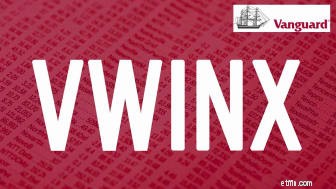
Vanguard Wellesley-inkomen vierde in juli haar 50-jarig jubileum. Maar het is niet het oudste aandelen-en-obligatiefonds in de stal van Vanguard. Die eer gaat naar Vanguard Wellington, waar we zo dadelijk op terug zullen komen.
Maar in tegenstelling tot Wellington, neigt Wellesley Income meer naar obligaties dan naar aandelen. Tweederde van het vermogen bestaat uit obligaties, de rest uit aandelen. (Wellington heeft meer aandelen dan obligaties).
De forse obligatieholding zorgt voor een stabiel fonds. Volgens Dan Wiener, redacteur van The Independent Adviser for Vanguard Investors, de afgelopen halve eeuw Wellesley Income's "opvallende kenmerk is zijn stabiliteit."
Standvastigheid en gedempt rendement gaan echter vaak hand in hand. In de afgelopen 15 jaar houdt het jaarlijkse rendement van VWINX van 7,1% geen gelijke tred met de brede markt, maar het overtreft 96% van zijn concurrenten:fondsen die 30% tot 50% van het vermogen aan aandelen toewijzen.
Michael Reckmeyer beheert de aandelenkant en Loren Moran kiest de obligaties. Beide beheerders zijn veteranen van Wellington Management, een beleggingsonderneming met langdurige banden die veel van de bekendste actief beheerde fondsen van Vanguard adviseert. Net als bij Vanguard Equity-Income, dat Reckmeyer ook helpt beheren, moeten we VWINX in de gaten houden in de toekomst.
Met de grote hoeveelheid obligaties in zijn portefeuille is Wellesley Income het meest geschikt voor conservatieve beleggers.
Lees meer over VWINX op de website van de Vanguard-provider.
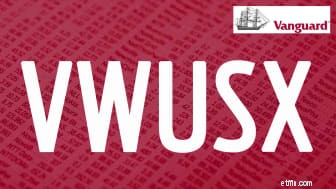
Vanguard Amerikaanse groei heeft in bepaalde jaren een aantal goede rendementen opgeleverd - de laatste tijd een rendement van 59% in 2020 - maar het heeft veel veranderingen ondergaan. Om te beginnen heeft het twee keer de activa geabsorbeerd van een slecht presterend peerfonds - Growth Equity in 2014 en Morgan Growth in 2019.
Dan is er de constante roulatie van subadviseurs bij het fonds. Volgens Morningstar hebben er sinds 2010 acht gedeeltelijke beheerderswisselingen plaatsgevonden bij het fonds. De laatste vond plaats begin 2021. Vanguard zette investeringsmaatschappij Jackson Square na 11 jaar af als beheerder. Er blijven vier subadviseurs over:Wellington Management, Jennison Associates en Baillie Gifford – elk beheert ongeveer 28% van de activa – en de interne kwantitatieve aandelengroep van Vanguard, die de rest beheert. Dit jaar ondergaat de kwantitatieve groep zijn eigen herschikking; oude leden van het team James Stetler en Binbin Guo gingen allebei met pensioen.
Al dat schuiven met onderdelen is verontrustend, en het maakt het beoordelen van de langetermijnverdiensten van een fonds lastig. Maar op basis van recentere prestaties gaat het goed. Het vijfjaarlijkse rendement op jaarbasis van VWUSX verslaat de S&P 500, het grootste deel van zijn peer group en zelfs Vanguard Primecap, het vereerde groeifonds van het bedrijf. Het was wel een hobbelige rit. In de afgelopen vijf jaar heeft dit Vanguard-fonds een bovengemiddelde volatiliteit gekend in vergelijking met alle groeifondsen van grote bedrijven.
Als U.S. Growth het enige actief beheerde groeifonds voor grote bedrijven is dat wordt aangeboden in uw 401 (k), en u de maag hebt voor veel volatiliteit, is dit een solide optie. Als u echter niet zo'n belegger bent, kunt u andere opties in uw plan overwegen die minder onzekerheid met zich meebrengen (wat het management betreft) en een beetje meer stabiele prestaties.
Lees meer over VWUSX op de Vanguard-providersite.

Tussen 2004 en eind 2020 had Giri Devulapally JPMorgan Large Cap Growth als de enige manager. Maar in november 2020 nam hij drie nieuwe medebeheerders aan. Sindsdien is het fonds achterop geraakt bij zijn concurrenten:fondsen die beleggen in grote, groeiende Amerikaanse bedrijven.
Dit is niet ongebruikelijk voor de korte termijn wanneer nieuwe managers op het toneel verschijnen. Maar in zijn eentje had Devulapally een redelijk stabiel record. In de afgelopen 15 jaar heeft JPMorgan Large Cap Growth 90% van zijn concurrenten en de S&P 500 overtroffen met een rendement op jaarbasis van 14,7%.
De managers van JPMorgan Large Cap Growth investeren in voornamelijk grote bedrijven die de komende drie tot vijf jaar een aanzienlijke groei kunnen realiseren. Deze bedrijven doen doorgaans zaken in een markt die betekenisvolle veranderingen ondergaat, hebben duurzame concurrentievoordelen, een bewezen sterke uitvoering en een opwaarts momentum in de aandelenkoers. De managers houden bijvoorbeeld van de toonaangevende fabrikant van landbouwmachines en zware machines Deere (DE), omdat het technologie heeft ontwikkeld die boeren over de hele wereld helpt de productiviteit te verhogen. En ze houden van Freeport-McMoRan (FCX), een mijnbouwbedrijf, omdat het kan profiteren van een toenemende vraag naar koper om elektrische voertuigen te maken. De topposities van het fonds zijn, volgens het laatste rapport, Alphabet (GOOGL), Apple (AAPL) en Microsoft (MSFT).
OLGAX is een goed beleggingsfonds voor beleggers die hun blootstelling in hun 401(k) aan snelgroeiende bedrijven willen vergroten.
Lees meer over OLGAX op de website van de JPMorgan-provider.
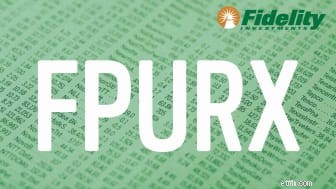
Manager Daniel Kelley nam Fidelity Puritan over medio 2018, maar hij lijkt zijn draai te vinden. Daarom upgraden we dit fonds van Hold naar Buy. Het 19,0% geannualiseerde rendement van het fonds sinds medio 2018 overtreft gemakkelijk de benchmark van het fonds, een 60/40 mix van de S&P 500-index en de Bloomberg US Aggregate Bond-index, evenals het 13,2% geannualiseerde rendement van het typische evenwichtige fonds.
Meld u aan voor Kiplinger's GRATIS Beleggen Wekelijkse e-letter voor aanbevelingen voor aandelen, ETF's en beleggingsfondsen, en ander beleggingsadvies.
Aan de aandelenkant vertrouwt Kelley op fundamentele en kwantitatieve analyse om de portefeuille op te bouwen. Hij geeft de voorkeur aan bedrijven die winst en omzetgroei bieden tegen een redelijke prijs. FPURX heeft momenteel een hoog belang van 70% van de activa. Aan de kant van de obligaties, waaronder een belang van ongeveer 5% in hoogrentende obligaties, is het doel om aantrekkelijk geprijsde obligaties te vinden met een gedisciplineerd oog op risicobeheer.
De laatste tijd heeft Kelley veel winkelaandelen verzameld die kunnen profiteren van de opgehoopte vraag van zowel consumenten als financiële instellingen, die baat hebben bij een verbeterde vraag naar leningen naarmate de economie weer opengaat. Als de rente zou stijgen, zou dat ook een bonus zijn voor banken.
Aan de kant van de obligaties zijn stijgende inflatie en rentetarieven een punt van zorg. (Obligatieprijzen en rentetarieven bewegen in tegengestelde richtingen.) Dus Puritan neigt momenteel naar bedrijfsobligaties van beleggingskwaliteit, vooral die uitgegeven door financiële instellingen, gezien de sterke balansen en aantrekkelijke waarderingen van de banken.
Lees meer over FPURX op de site van de Fidelity-provider.
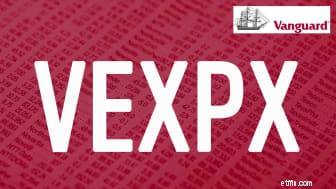
Vanguard Explorer houdt aandelen in groeiende kleine en middelgrote bedrijven. Het is een van de weinige aandelenfondsen van kleine bedrijven die tot de top 100 van 401(k)-fondsen behoren. Maar hoewel veel indexen zijn gebaseerd, wordt deze actief beheerd. In feite, in overeenstemming met de Vanguard-manier, hebben velen een hand in VEXPX.
Managers van vijf verschillende bedrijven werken onafhankelijk van elkaar en passen hun eigen proces toe om hun delen van de activa van het fonds te beheren:
Het mengelmoes managementteam resulteert in een rendement dat net boven het gemiddelde ligt. Maar de portefeuille is enorm, met bijna 780 aandelen, en het fonds heeft een totale activa van $ 24,7 miljard, wat VEXPX het grootste actief beheerde fonds voor kleine bedrijven in het land maakt. Ten slotte maken meerdere veranderingen in subadviserende beheerders door de jaren heen – en zelfs recentelijk – het moeilijk om met vertrouwen te beoordelen hoe het fonds het zal doen over een volledige marktcyclus.
Zeven van de tien beheerders van het fonds zijn al bijna vijf jaar in dienst. En in elk van de vier volledige kalenderjaren sinds het begin van 2017 heeft Vanguard Explorer de Russell 2000 voorbijgestreefd. Met andere woorden, u bent in die tijd beter af geweest in Explorer dan in een indexfonds voor kleine bedrijven.
Houd in gedachten:omdat aandelen van kleine bedrijven vaak volatieler zijn dan aandelen van grote bedrijven, moet VEXPX worden aangehouden als aanvulling op een kernbelang in aandelenfonds van grote bedrijven of een totaal aandelenfonds.
Lees meer over VEXPX op de website van de Vanguard-provider.
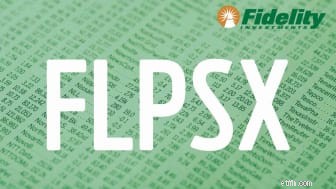
Joel Tillinghast was een Fidelity-analist voor tabaks- en persoonlijke verzorgingsproducten toen hij meer dan 30 jaar geleden met een concept voor een nieuw fonds kwam. Het idee was om goede waarden te vinden in kleine bedrijven van hoge kwaliteit en grotere bedrijven die uit de gratie waren.
Fidelity high-ups vonden het geweldig. Dus eind 1989, Fidelity Low-Priced Stock gelanceerd.
FLPSX is sindsdien een onmiskenbaar succes geweest, met Tillinghast aan het roer, die gemakkelijk beter presteerde dan de gemiddelde jaarlijkse winst in de S&P 500, de Russell 2000 index voor kleine bedrijven, de Russell mid-cap benchmark en bijna alle aandelenfondsen van kleine of middelgrote bedrijven . Morningstar noemde Tillinghast onlangs de uitstekende portefeuillebeheerder van 2021.
Sommige dingen zijn in de loop der jaren veranderd. Tillinghast heeft nu vijf medebeheerders, hoewel hij nog steeds ongeveer 95% van het fondsvermogen beheert. In de begindagen van het fonds moesten aandelen op het moment van aankoop $ 15 of minder zijn. Een paar jaar geleden sprong de drempel naar $ 35, anders moet het aandeel bogen op een winstrendement dat op of boven de mediaan van de Russell 2000-index voor kleine bedrijven ligt, die nog steeds de benchmark van het fonds is. Low-Priced Stock bezit ook meer buitenlandse aandelen dan in de begindagen. Volgens het laatste rapport was 35% van het vermogen belegd in internationale aandelen, voornamelijk in Europa en Japan.
Ten slotte was FLPSX altijd gericht op bedrijven van elke omvang, maar in het begin neigde het sterk naar kleine bedrijven. Nu is het fonds gelijk verdeeld over aandelen van grote, middelgrote en kleine bedrijven.
Maar Tillinghast en zijn medemanagers zoeken nog steeds naar bedrijven met stevige winsten, weinig schulden en een duurzaam concurrentievoordeel ten opzichte van concurrenten. Hij is niet "gierig", zegt Morningstar-analist Robby Greengold, en hij "jaagt geen rages na".
Lees meer over FLPSX op de site van de Fidelity-provider.
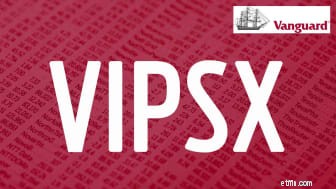
Nu de inflatie hoger is dan in bijna een decennium, zijn Treasury Inflation-Protected Securities (TIPS) meer in het nieuws. De jaarlijkse inflatie voor de periode van 12 maanden eindigend in oktober, de meest recente beschikbare gegevens, bedroeg 6,2%. Dat is iets meer dan het driedubbele van de jaarlijkse inflatie van ongeveer 2% in de afgelopen vijf kalenderjaren.
Beleggers die de stijgende consumentenprijzen voor willen blijven, wenden zich doorgaans tot TIPS omdat, naast een gegarandeerde rente, de hoofdsom van de obligatie meebeweegt met de inflatie.
Maar de rendementen op TIPS zijn al maanden negatief. Vanguard tegen inflatie beschermde effecten' huidige opbrengst is bijvoorbeeld negatief 1,8%. Dat betekent echter niet dat u in dit fonds een negatief rendement behaalt. Het rendement van het fonds zal eerder het inflatiepercentage zijn minus het negatieve rendement. In de afgelopen 12 maanden is VIPSX bijvoorbeeld, ondanks negatieve opbrengsten, met 7,8% gestegen.
Lange tijd fondsbeheerder Gemma Wright-Casparius geeft tegenwoordig de voorkeur aan TIPS met korte looptijden. Bijna de helft van het vermogen van het fonds is belegd in TIPS met een looptijd van minder dan vijf jaar. Vanguard-onderzoeken tonen aan dat TIPS op korte termijn stabieler zijn tijdens perioden van inflatieverrassingen dan TIPS op middellange en lange termijn.
Vanguard Inflation Protected Securities is het beste voor gepensioneerde of bijna gepensioneerde beleggers. Jongere beleggers kunnen inflatie afweren met het rendement in hun forse aandelenportefeuilles, en jaarlijkse salarisverhogingen zullen ook helpen. Gepensioneerden hebben echter meestal geen van beide voordelen.
Lees meer over VIPSX op de Vanguard-providersite.
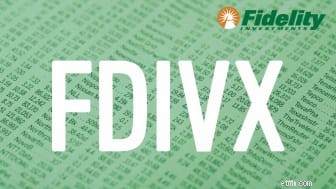
Het is moeilijk om opwinding op te wekken over beleggen in het buitenland, omdat Amerikaanse aandelen het zoveel beter hebben gedaan dan buitenlandse aandelen.
Zoals buitenlandse aandelenfondsen gaan, Fidelity Diversified International , dat voornamelijk belegt in grote bedrijven met duurzame of verbeterende groeivooruitzichten, is een solide keuze. In feite heeft dit Fidelity-fonds de index – de MSCI EAFE, die buitenlandse aandelen in ontwikkelde landen volgt – verslagen in acht van de afgelopen 11 volledige kalenderjaren.
William Bower runt FDIVX al meer dan 20 jaar. Hij geeft de voorkeur aan bedrijven van hoge kwaliteit met concurrentievoordelen en consistente winstgevendheid. De belangrijkste landenblootstellingen van het fonds zijn onder meer Japan, Frankrijk en het VK. Maar de beleggingen zijn niet beperkt tot ontwikkelde landen. In feite is 10% van het fonds belegd in opkomende markten, voornamelijk in Azië. De belangrijkste belangen zijn ASML Holding (ASML), een maker van fotolithografische systemen die worden gebruikt om halfgeleiderchips te maken, farmaceutisch bedrijf Roche Holding (RHHBY) en luxegoederenmaker LVMH Moet Hennessy Louis Vuitton (LVMUY).
Er zijn zeker beter actief beheerde fondsen die er zijn, maar die fondsen zijn mogelijk niet voor u beschikbaar in ons plan. Bij deze beoordeling moeten we bedenken dat dit mogelijk het enige actieve buitenlandse fonds is dat beschikbaar is in het plan. In dat kader is Fidelity Diversified International een prima keuze.
Lees meer over FDIVX op de site van de Fidelity-provider.

T. Rowe Price New Horizons is een nieuw hoofdstuk ingegaan met manager Joshua Spencer, die instapte nadat superster Henry Ellenbogen T. Rowe Price abrupt verliet in april 2019. Tot nu toe was het spannend. Sinds Spencer het roer overnam, versloeg hij de concurrentie met een rendement op jaarbasis van 33,1%, waarmee hij 94% van zijn concurrenten versloeg - fondsen die beleggen in middelgrote, groeiende bedrijven - en ver voor op de Russell Midcap Index.
PRNHX is gesloten voor nieuwe investeerders, maar als het wordt aangeboden in uw door de werkgever gesponsorde pensioenspaarplan, bent u vrij om aandelen te kopen als een eerste belegger in het fonds.
Ellenbogen was een lastige act om te volgen. Tijdens zijn negenjarige ambtstermijn als beheerder van New Horizons boekte het fonds een rendement van 18,7% op jaarbasis, beter dan elke denkbare gediversifieerde aandelenindex, en op één na alle gediversifieerde aandelenfondsen in de VS:een fonds voor kleine bedrijven genaamd Virtus KAR Small-Cap Growth ( PXSGX).
Maar Spencer heeft zijn stempel gedrukt op PRNHX. Net als Ellenbogen zoekt hij naar kleine, onontdekte opkomende bedrijven die het potentieel bieden voor versnelde winstgroei dankzij nieuwe producten, een nieuw leven ingeblazen managementteam of een structurele verschuiving in de economie. Investeringen in particuliere bedrijven – waaronder schoenmaker Allbirds (BIRD), die pas zeer recent naar de beurs ging; kleding bedrijf Rent the Runway; en Tempus Labs, een biotechbedrijf, vertegenwoordigen 5% van de activa van het fonds en bieden de belofte van een hoger rendement.
Hoewel Spencer zich richt op bedrijven met een marktwaarde van $ 7 miljard of minder op het moment van aankoop, zoals zijn voorganger, zal hij vasthouden zolang het bedrijf groeit. Het is een van de redenen waarom New Horizons, dat onder Ellenbogen begon als een groeifonds voor kleine bedrijven, nu is geclassificeerd als een mid-cap groeifonds.
PRNHX is een solide beleggingsfonds voor beleggers die vroeg willen investeren in bedrijven met solide groeivooruitzichten.
Lees meer over PRNHX op de T. Rowe Price-providersite.

PGIM Total Return Bond verslaat consequent de markt. In zeven van de afgelopen 10 volledige kalenderjaren (tussen 2011 en 2020) heeft het beleggingsfonds de Bloomberg U.S. Aggregate Bond-index verslagen. Dat is beter dan het typische core-plus-obligatiefonds op middellange termijn (deze fondsen kunnen tot 20% beleggen in hoogrentende schulden). Maar geïnteresseerde beleggers moeten weten dat de extra oomph in rendement gepaard gaat met een beetje meer volatiliteit dan zijn collega's of de benchmark.
PDBAX kan beleggen in alle sectoren van de vastrentende markt. Momenteel geven de vier medebeheerders de voorkeur aan bedrijfsobligaties van beleggingskwaliteit en door activa gedekte effecten, die volgens hen meer kansen bieden dan staatsobligaties en door de overheid gegarandeerde door hypotheken gedekte effecten, hoogrentende schuldbekentenissen en buitenlandse obligaties.
Het fonds levert momenteel 1,6% op.
Lees meer over PDBAX op de site van de PGIM-provider.
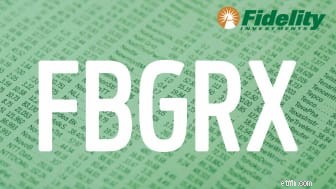
Fidelity Blue Chip-groei is lid van de Kiplinger 25 en behoort tot de best presterende 401(k) beleggingsfondsen die u kunt vinden. Manager Sonu Kalra's geannualiseerde 10-jaarsrendement van 23,0% overtreft 97% van alle groeifondsen van grote bedrijven en de S&P 500.
"Wat we met dit fonds proberen te doen, is bedrijven identificeren waarvan de markt niet alleen het absolute groeitempo verkeerd beoordeelt, maar ook de duurzaamheid van die groei", zegt hij. "We doen dat door te proberen bedrijven te identificeren die deelnemen aan grote ondergepenetreerde markten."
Kalra verdeelt de portefeuille in drie emmers:
Seculiere telers, zegt hij, zijn bedrijven die profiteren van groeiende trends zoals e-commerce, cloudtechnologie, elektrische voertuigen.
Cyclische telers zijn onder meer bedrijven die zich in de goede positie van de conjunctuurcyclus bevinden - bijvoorbeeld huizenbouwers die profiteren van de verhuizing uit de stad tijdens COVID 19, of energiebedrijven die zich herstellen na de pandemie.
Kalra noemt de laatste emmer 'opportunistische telers'. Het omvat bedrijven die een katalysator hebben om toekomstige groei te stimuleren:een nieuwe manager of een nieuw product. American Eagle Outfitters (AEO), bijvoorbeeld, is een retailer met een merk van intieme kleding dat snel groeit en een online bedrijf dat floreert.
Beleggers die op zoek zijn naar een actief beheerd fonds dat de S&P 500 kan verslaan, zijn niet teleurgesteld in de 12 jaar dat Kalra het fonds beheert. We verwachten niet dat dat zal veranderen.
Lees meer over FBGRX op de Fidelity provider-site.
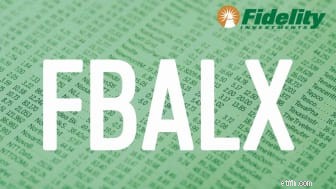
Funds that hold stocks and bonds, otherwise known as balanced funds, are typically considered moderate all-in-one funds. But Fidelity Balanced is a little turbocharged. It typically holds an above-average stake in stocks compared with the peer group, funds that allocate 50% to 70% of assets to stocks.
At last report, FBALX held 72% of its assets in stocks – nearly 10 percentage points more than the typical balanced fund. On the bond side, the fund is a bit more staid than others, generally speaking. Investment-grade securities, rated between triple-A and triple-B, fill most of the bond portfolio – more than the typical balanced fund holds in high-grade bonds – and represent 23% of the entire portfolio. Junk-rated or below bonds make up just 1% of the fund's assets.
This Fidelity fund has a unique setup. Über-manager Robert Stansky makes the big-picture decisions of how much of the portfolio should own in stocks and in bonds. Eight stock pickers and four bond pickers, who specialize in specific sectors, do the specific security selection. U.S. government bonds dominate the bond portfolio. The usual suspects – including Microsoft, Apple, Amazon.com (AMZN) and Alphabet – top the stock side.
Balanced funds are good choices for investors who want a no-fuss, all-in-one fund. But this one is more aggressive than others. That means more volatility in down markets, so bear that in mind when you invest.
But overall, FBALX remains among the best Fidelity funds. The portfolio positioning has helped Fidelity Balanced deliver a 10-year annualized return that beats 96% of its peers. It also results in a yield of about 0.8% at present.
Learn more about FBALX at the Fidelity provider site.
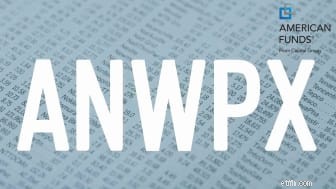
American Funds New Perspective fund splits its portfolio between U.S. and foreign stocks. It's a solid option for investors looking to beef up their foreign stock exposure, but who don't want to go all-in on a foreign-stock fund.
Seven managers divide the portfolio's $140 billion in assets and invest their own sleeve as they see fit. But they all must invest in companies that receive a meaningful share of sales and operations outside of their home base. Together they have constructed a roughly 300-stock portfolio of mostly large companies with above-average earnings growth. Tesla (TSLA), Microsoft and Facebook platform Meta Platforms (FB) are the fund's top holdings.
Next to its peers – funds that invest in foreign and U.S. large companies – New Perspective has stayed above average for the majority of each of the past 11 calendar years.
Learn more about ANWPX at the Capital Group provider site.
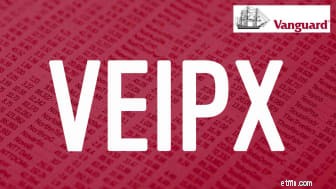
Two longtime fund managers recently stepped down at Vanguard Equity-Income , which is a member of the Kiplinger 25. But we're not adjusting our Buy recommendation for the fund – yet.
Although manager changes can be tricky, in VEIPX's case, the managers who left are part of Vanguard's in-house quantitative equity group, which relies on a complex algorithm to choose stocks. That computer model shouldn't change with the new guard. Plus, the quant group runs just one-third of the portfolio.
However, the lion's share of the portfolio is run by Wellington Management's Michael Reckmeyer, who recently announced plans to retire in June 2022. That could affect our thoughts on the fund moving forward, so stay tuned.
Reckmeyer favors high-quality companies that pay increasingly higher dividends over time. "We focus on sustainable payouts and companies that increase dividends on an annual basis," he says, "because over the long haul, dividends drive 40% of returns over the years."
But Reckmeyer likes a good bargain. He prefers to step in when the market overreacts to bad short-term news. "It's a bit of a contrarian take to dividend investing," he says.
Vanguard Equity-Income might not beat the S&P 500 over time. But it's not too far behind, and the ride is smoother than that of the broad index. Plus, the fund's dividend yield, 2.2%, beats the current 1.3% yield of the S&P 500.
Learn more about VEIPX at the Vanguard provider site.

Manager Brian Berghuis has run T. Rowe Price Mid-Cap Growth for close to three decades (it will be 30 years in June 2022), delivering a 14.3% annualized return over the period. No other diversified U.S. stock fund manager in the country has done better – for as long. Although three other diversified U.S. stock funds sport slightly higher annualized returns over that period, none were earned by the same manager over the entire period.
RPMGX has been closed to new investors since 2010. But if Mid-Cap Growth is offered in your 401(k), that doesn't matter. Participants in a retirement-savings plan that includes Mid-Cap Growth as an investment option can invest at any time.
Now the only question is how much longer Berghuis, who just entered his 60s, will stick around. He has not announced any plans to retire. That's good news. But Mid-Cap Growth has taken on associate managers, which at T. Rowe Price is sometimes a signal (albeit a distant one) that a manager transition is in the works. The firm prefers to make changes slowly, and adding associate managers to a fund a year in advance of a manager change is not uncommon.
Berghuis still is lead portfolio manager and is ultimately responsible for portfolio decisions, but Donald Easley and Ashley Woodruff were recently named associate managers on the fund; John Wakeman has been an associate portfolio manager since 1992.
We're envious of those 401(k) plan participants who can invest in RPMGX. It's all-around one of the best T. Rowe Price funds on offer.
Learn more about RPMGX at the T. Rowe Price provider site.
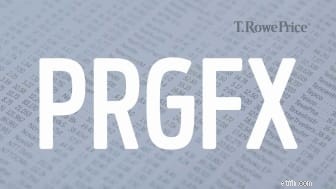
T. Rowe Price Growth Stock is one of three large-company growth funds from T. Rowe Price – along with Blue Chip Growth (TRBCX) and Large-Cap Growth I (TRLGX) – that rank among the most widely held 401(k) funds. That's hardly surprising given the firm's rich record with growth investing. Chances are your 401(k) plan only offers one of them, so you won't have to choose between them.
PRGFX is a decent choice for investors looking for a good growth fund. Manager Joe Fath likes to invest in companies that feature one or more of the following characteristics:industry leadership in a lucrative part of the economy, superior growth in earnings and cash flow, an ability to sustain or expand earnings momentum even during tough economic times. The traits typically lead Fath to concentrate on four sectors:information technology, consumer discretionary, communications services and healthcare.
In mid-2021, PRGFX shareholders agreed to reclassify the fund as non-diversified, instead of diversified, meaning the fund can invest a greater portion of its assets in fewer issuers. This could lead to more volatility, but the firm has said publicly that it believes reclassification won't "substantially affect the way a fund is currently managed."
Fath hasn't made significant changes to the portfolio, yet. In late 2020, the fund's biggest 10 holdings in the fund represented 45.9% of the fund's assets. At the end of September 2021 – three months after Growth Stock was reclassified – the top 10 holdings represented 46.9% of the fund's assets.
PRGFX is one of the best mutual funds available in 401(k) plans, and a solid growth stock fund for investors looking to spice up their core portfolio.
Learn more about PRGFX at the T. Rowe Price provider site.
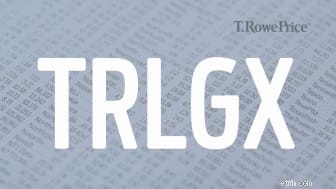
Regular mom-and-pop investors can't invest in T. Rowe Price Large-Cap Growth I , which has a $1 million minimum and is designed for institutional clients, such as a 401(k) plan. But it's one of T. Rowe Price's best funds. And it sports a well-below-average 0.56% expense ratio, the lowest of all the T. Rowe price funds mentioned in this story.
Manager Taymour Tamaddon took over in early 2017, so we limit our scrutiny to the length of his tenure. But Tamaddon has delivered, outperforming his peers – funds that invest in large, growing companies – as well as the S&P 500.
Tamaddon, like almost every other U.S. growth stock fund manager, holds the usual suspects at the top of his portfolio. but he takes sizeable bets. Alphabet, Microsoft and Amazon.com, at last report, were the top three holdings and represented nearly 27% of the fund's assets.
Along with Blue Chip Growth and Growth Stock, Large-Cap Growth was also reclassified in mid-2021 as a non-diversified fund with the SEC, which allows it to concentrate in a certain sector, industry or geographic area. Tamaddon already takes big stakes in specific stocks. But further concentration might add to the fund's volatility.
Even so, as long as you can stomach the bumps along the way, T. Rowe Price Large-Cap Growth is a solid choice for investors looking to tap into fast-growing U.S. companies.
Learn more about TRLGX at the T. Rowe Price provider site.
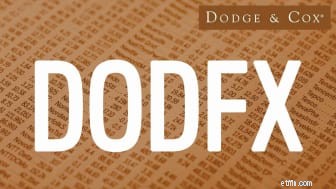
At Dodge &Cox International Stock , seven managers work together doing meticulous research on every prospective security. They love a good bargain, which makes them a bit contrarian. When any given company shares are down because of bad news or economic headwinds, you can bet that DODFX managers are poking around. They're looking to find good deals on companies with a competitive edge, good growth prospects and smart executives.
International has leeway to invest in companies in the developed and emerging worlds. At last report, 20% of the fund's assets were invested in emerging-markets countries, including Brazil, China, India, Mexico and Peru. But firms based in Europe and the U.K. comprise most of the portfolio. Drug companies GlaxoSmithKline (GSK) and Sanofi (SNY) are the fund's top holdings.
DODFX has a big position in pharmaceuticals stocks – 16% of the fund's assets – because the managers view them as a compelling pocket of the market. "Strong innovation pipelines should drive attractive earnings growth over the coming years," say the managers.
Foreign stocks have trailed U.S. stocks in recent years, and that's still the case today. Over the past 12 months, the MSCI EAFE index, which tracks stocks in foreign developed countries, put up a decent 17.0% return, but that lags the 33.0% gain in the S&P 500. Emerging-markets stocks, as measured by the MSCI Emerging Markets index, also trailed, with a 6.5% gain over the past year.
Dodge &Cox International Stock has at least done better than the international indexes, with a roughly 18% return over the past 12 months, in part because the value-priced shares have done better.
DODFX is a solid 401(k) mutual fund for investors who want an actively managed foreign-stock portfolio. But some patience is required for this contrarian strategy.
Learn more about DODFX at the Dodge &Cox provider site.
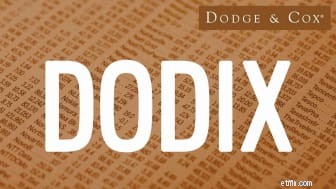
Dodge &Cox is a 90-year-old company with a steady, consistent investment process. Multiple managers take on each fund.
On Dodge &Cox Income , eight managers with an average of more than two decades of investing experience buy mostly high-quality bonds with an eye toward providing current income and preserving capital. Their hunting grounds include a variety of fixed-income sectors including Treasuries, mortgage- and asset-backed debt, corporate debt and municipal bonds, among others. But they like a good bargain and will tilt toward pockets of the market where they see good opportunities, within the context of their view of the economy and relative yields of securities in bond subsectors, among other factors.
Over each of the past one, three, five, 10 and 15 years, DODIX has beat the Bloomberg U.S. Aggregate Bond index.
Active management counts when it comes to investing in intermediate-term bond funds, and the managers at Dodge &Cox certainly back that up. Before the pandemic, in early 2020, the managers significantly reduced the fund's exposure to corporate bonds because the difference in interest rates between corporate debt and Treasuries with comparable maturities was slim.
That move set DODIX up well for the bond selloff in March 2020 because it had cash at the ready. Many high-quality, creditworthy companies issued long-term debt at yields comparable to junk-rated debt, and the managers snapped up these attractively priced bonds, such as those issued by Anheuser-Busch InBev (BUD), Coca-Cola (KO), Exxon Mobil (XOM), FedEx (FDX), Oracle (ORCL) and T-Mobile US (TMUS).
Corporate bonds went on to have a banner year and helped lift the fund's gain in 2020 to 9.5%, outpacing the 7.5% return in the Bloomberg U.S. Aggregate Bond index, and ranked among the top 23% of its peers:intermediate-term core-plus bond funds. (The core-plus indicates that the fund is allowed to own up to 20% of its assets in high-yield bonds, unlike core bond funds which can hold up to 10%.)
DODIX yields 1.4%.
Learn more about DODIX at the Dodge &Cox provider site.
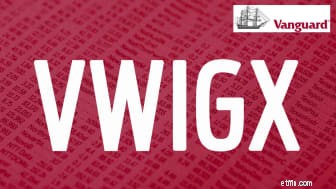
We have long lauded Vanguard International Growth as a superstar for delivering above-average returns with below-average risk. But we're feeling a little cautious these days because a key manager is leaving in April 2022.
Investment firm Baillie Gifford is one of two subadvisers that run the fund, but it manages the biggest chunk (70%) of the assets. And James Anderson, a manager since 2003, is leaving. Comanager Thomas Coutts remains, however, and he's been in place since late 2016. Lawrence Burns was named comanager in 2020.
Managers from Schroders run the remaining 30%, and nothing is changing there. Simon Webber has been with the fund since late 2009, though he too, has a new comanager in James Gautrey, who joined in late 2020.
The two firms, both U.K.-based, have slightly different approaches to picking growth stocks; Vanguard chose them to complement each other. Baillie Gifford is willing to pay up for stocks with explosive growth. Schroders' ideal stock is underappreciated but growing fast.
The portfolio holds roughly 120 stocks, mostly in large companies domiciled in developed countries. But China stocks make up 14% of the assets. Hong Kong and India combined represent another 4% or so.
VWIGX has long been one of our favorite international stock funds. But we'll be watching it carefully over the next year or two. Fund manager changes can sometimes (but not always) result in some portfolio volatility as new managers settle in and make their mark.
Learn more about VWIGX at the Vanguard provider site.
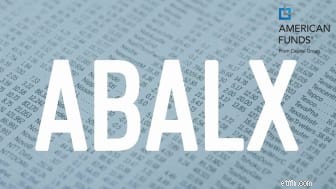
Like other balanced funds, American Funds American Balanced holds stocks and bonds. It is designed, say the managers in a recent report, "to serve as the complete portfolio of a prudent investor."
In other words:Buy shares in this fund, and you're done.
ABALX fine-tunes its blend of stocks and bonds to achieve three goals:conserve capital, provide current income and offer long-term growth. Keeping volatility at bay and delivering steady returns is also a priority. At last report, the fund held 65% of its assets in stocks, 32% in bonds and 3% in cash and other securities. The fund has a current SEC yield of 1.00%.
The portfolio's risk-aware positioning helped in early 2020, when both stocks and bonds plummeted in value during the pandemic's early days. American Balanced sank 22% between February and March 2020, while its typical peer – funds that allocate 50% to 70% in stocks – lost 24%. Indeed, the fund is a peer-beater. Over the past 10 years, American Balanced outpaced 86% of its peers with a 12.3% annualized return.
ABALX is among the best mutual funds you can stash in a 401(k) portfolio. As balanced funds go, it's a standout option.
Learn more about ABALX at the Capital Group provider site.
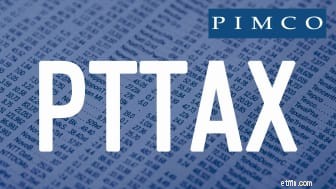
Managers Sig Segalas and Kathleen McCarragher are the longest tenured managers behind Harbor Capital Appreciation , which counts two others comanagers appointed in 2019, Blair Boyer and Natasha Kuhlkin. But the fund managers also have a team of analysts working alongside them.
And they all work for Jennison Associates as subadvisers running HCAIX.
The managers look for large companies, with at least $1 billion in market value at the time of purchase, with robust earnings and sales growth, high or improving profitability, and strong balance sheets. They're not value investors, but they prefer to buy stocks at prices that are attractive relative to long-term growth prospects. Most of the stocks in the portfolio are in companies that lead their industries, have capable and disciplined managers running the firm, and that conduct substantial research and development.
Capital Appreciation's top holdings are well-known U.S. stocks. Amazon.com, Tesla, Apple, Nvidia (NVDA) and Shopify (SHOP), for instance, topped the portfolio at last report. But some of HCAIX's fund's best performers have been off the beaten path. Foreign stocks comprise 14% of assets, for instance, and stock in Dutch secure payment platform Adyen (AYDEY) climbed 45% over the past 12 months.
Harbor Capital Appreciation has been a standout performer over the years. Its 10- and 15-year annualized returns rank among the top 20% or better of all large-company growth funds. It's consistent, too. The fund has outpaced its peers in seven of the past 10 full calendar years (between 2011 and 2020).
The tradeoff is high volatility. Over the past decade, HCAIX has been more volatile than 91% of its peers. Even so, this is a great long-term choice for investors who want to enhance their exposure to fast-growing companies.
Learn more about HCAIX at the Harbor provider site.
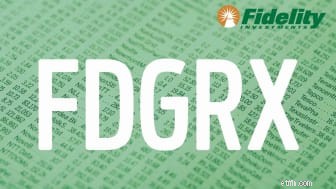
Fidelity Growth Company is Fidelity's best large-company growth fund. Over the past decade, manager Steven Wymer has delivered a 23.9% annualized total return to shareholders, which trounces the S&P 500. Only a dozen or so funds have done better than that over the past 10 years.
Many investors are shut out to Fidelity Growth Company now because it's closed to new investors. But if your 401(k) plan includes FDGRX as an investment option, you can still invest in it, even if you're new to the fund.
Wymer holds close to 500 stocks in the fund, with a heavy tilt toward information technology companies, such as Nvidia, Salesforce.com (CRM) and Shopify, as well as communications services firms, such as Google parent Alphabet, Facebook parent Meta Platforms and Roku (ROKU), the streaming-device company.
Economically sensitive stocks have recently given back some of their leadership to secular growth stocks, Wymer says in a recent report. "The outperformance of a stock or sector in the months ahead will be driven more by individual fundamentals than macro factors or trends," he says. That's why he's focused on companies with a strong outlook based on fundamentals.
If you're lucky enough to have access to FDGRX in your 401(k) plan, buy shares.
Learn more about FDGRX at the Fidelity provider site.

About a decade ago, Pimco Total Return was the biggest bond fund in the country and its manager, Bill Gross, was "the bond king." But in 2014, Gross left the fund, and the firm he cofounded under a cloud after a string of missed big-picture calls on the economy and interest rates. The firm explained the departure was due to "fundamental differences."
Since then, PTTAX has slipped from its perch. It's not the biggest bond fund anymore. But with $72 billion in assets, Pimco Total Return still ranks among the most widely held bond funds in America.
On a total return basis, it's not a dazzler, but the fund is still a solid choice for bond exposure in your 401(k). Over the past five years, well after the dust from Gross's departure settled, the fund has returned 3.8% annualized, just past the 3.6% annualized return in the Bloomberg U.S. Aggregate Bond index.
Mark Kiesel, Scott Mather and Mohit Mittal run Pimco Total Return together, but the fund's process hasn't changed. The firm's investment committee makes the big-picture calls on the economy and interest rates, which guides the managers and analysts as they do their research on security selection and make decisions on what sectors to focus on.
They invest mostly in investment-grade debt; U.S. government-related debt and high-quality corporate credit make up 62% of assets at last report. But the fund also buys junk-rated corporate IOUs (2%), mortgage-backed and asset-backed securities (21%), and foreign debt issued in developed (5%) and emerging countries (18%). (The allocations add up to more than 100 because of certain short-duration securities that the fund holds, including futures, swaps and other derivatives.)
The investment process can sometimes lead to missteps – if the firm's investment committee makes the wrong call, say, on the direction of interest rates. But over time the strength of the fund's security selection, which is driven by thorough fundamental analysis, has kept the fund steady. It beats the Bloomberg U.S. Aggregate Bond index over time, and boasts better risk-adjusted returns, too. But the fund yields 1.2%, less than the current 1.5% yield of the index.
Learn more about PTTAX at the Pimco provider site.
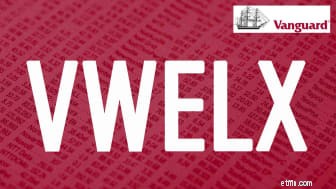
Vanguard Wellington has a long history and a standout long-term record. Founded in 1929, it is the nation's oldest balanced fund. Roughly two-thirds of the fund holds stocks; rest of the portfolio is devoted to bonds.
VWELX – another member of the Kiplinger 25 – has undergone a bit of a changing of the guard at the top. Daniel Pozen, a comanager since 2019, took over as sole manager of the stock side of the fund in July 2020; Loren Moran, a comanager on the bond side since 2017, is now the fund's sole bond picker after a comanager retired in June 2021.
On the stock side, Pozen favors high-quality large companies with a competitive edge over peers. Alphabet, Microsoft and Meta Platforms were top holdings at last report. He has trimmed the number of stocks in the portfolio from the high 80s to the high 60s since taking over. Stocks aren't required to pay a dividend to be considered for the portfolio, but roughly 85% of the stocks in the fund do.
On the bond side, Moran tilts heavily toward high-quality corporate debt, but spices up returns with investment-grade asset-backed securities and taxable municipal bonds. She holds roughly one-quarter of the fixed-income portfolio in Treasuries and agency bonds to maintain liquidity – easy access to cash – in VWELX. That's less than the typical 30% of assets that peer balanced funds hold on average.
Vanguard Wellington is a moderate-risk investment choice because it holds both stocks and bonds. But it still packs a punch.
Learn more about VWELX at the Vanguard provider site.
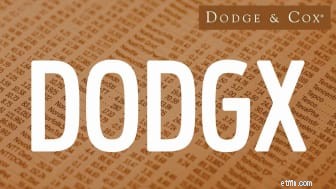
Dodge &Cox Stock has been a member of the Kiplinger 25, our favorite actively managed no-load funds, since 2008. The fund's contrarian, buy-at-a-bargain-and-wait strategy takes some extra patience and perhaps is best suited to investors with long time horizons.
Longtime shareholders have not been disappointed. Over the past decade, Stock has returned 15.5% annualized. That trails the S&P 500, which has gained 17.0% annualized. But the gain in the index is thanks mostly to fast-growing stocks that DODGX, which favors value-priced stocks, doesn't typically own. But its performance against its peers is noteworthy; Dodge &Cox Stock beats 99% of its peers:large-company value funds.
Nine managers work collectively to pick stocks in companies that are temporarily undervalued by the stock market but have a favorable long-term growth outlook. Holdings in the portfolio, for example, sport an average 13.3 price-to-earnings ratio based on earnings estimates for the next 12 months. By contrast, constituents in the S&P 500 index have an average forward P/E ratio of 21.4.
Shares in financial and health care companies comprise 45% of the fund's assets. Among the fund's biggest holdings, for instance, are Wells Fargo (WFC), Capital One Financial (COF), Charles Schwab (SCHW) and Sanofi. Foreign stocks make up a little more than 10% of assets.
Dodge &Cox Stock is one of the best mutual funds for 401(k) investors seeking a market-beating actively managed fund. But the contrarian tilt of this fund is best suited to those with a medium to long time horizon.
Learn more about DODGX at the Dodge &Cox provider site.
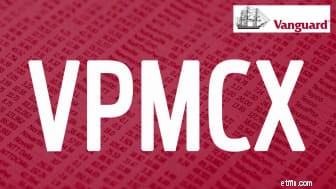
Vanguard Primecap was closed to all investors long ago, but if it's offered in your 401(k) plan, you can still put away up to $25,000 a year. Consider yourself lucky. Vanguard Primecap is a superb fund run by five of the best stock-pickers in the country.
The managers – Theo Kolokotrones, Joel Fried, Alfred Mordecai, M. Mohsin Ansari and James Marchetti – work independently managing their own slice of the fund's assets. But they each aim to invest in growing companies that trade at bargain prices. In particular, they look for a catalyst – a new product, new executives at the helm or a restructuring – that they think will push a stock price higher over the next three to five years.
Once they buy a stock, they tend to hang on. The fund's 6% turnover ratio is a fraction of the 55% to 87% turnover of typical U.S. stock funds that invest in large companies.
"Because the Primecap team is buying stocks facing near-term uncertainty, it often takes time for their ideas to work out," says Dan Wiener, editor of The Independent Adviser for Vanguard Investors . "But in contrast to many other growth managers, the Primecap team is willing to wait, and on average holds onto a stock for a decade."
VPMCX's record isn't blemish-free, of course. Despite a 10-year annualized record that beats the S&P 500, Vanguard Primecap has lagged the index in five of the past 10 full calendar years, most recently in 2020.
But over the long haul, Vanguard Primecap shareholders have gotten a lot richer.
Learn more about VPMCX at the Vanguard provider site.
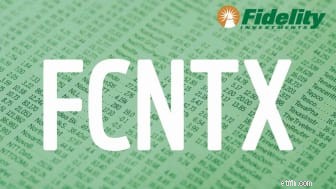
Fidelity Contrafund is a proven standout.
Manager Will Danoff prefers to buy beaten-down or overlooked best-in-class companies with superior earnings growth, proven management teams and sustainable competitive advantages. These days, he's bullish on tech – well, he has been for years, but he is particularly keen on the space now as digital transformation stories continue apace. More than 30% of the fund is invested in technology, at last report, which is a touch above the 28% weighting in the S&P 500 stock index. He has owned Amazon.com, a top holding, since 2007, and Apple, another top FCNTX holding, since 2003.
Watchers of Fidelity funds consider Contrafund a conservative choice for growth. There's some merit to that. Over the past five years, for instance, the fund's 22.8% annualized return ranks better than just 53% of its peer group:funds that invest in growing, large companies. But FCNTX has been less volatile during that period than the typical large-company growth fund, too.
This is one of the best 401(k) mutual funds for investors who want growth but not all the volatility that comes with a more aggressive fund.
Learn more about FCNTX at the Fidelity provider site.
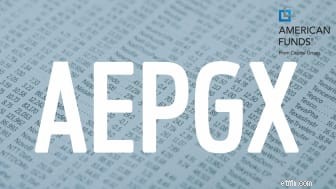
American Funds EuroPacific Growth is the biggest actively managed foreign stock fund in the country. But the Capital System of dividing a fund's assets among multiple managers has helped the fund stay competitive. Over the past five and 10 years, for instance, the fund has largely kept pace with its typical peer:funds that invest in large, foreign companies. And it beats the MSCI EAFE index of stocks in foreign developed countries.
Certainly, there are zippier foreign-stock funds available out there. But in a 401(k) plan, the investment choices, especially with foreign-stock funds, are typically limited to an actively managed fund and an index fund. So, the question for 401(k) investors is whether an investment in AEGPX is better or worse than an investment in an international-stock index fund.
On that, the verdict is clear:EuroPacific Growth beats Vanguard Total International Stock Index (VGTSX) over the past two, three, five and 10 years. What's more, during the recent bear market in early 2020, EuroPacific Growth fund held up better, with a 31.4% loss, compared with a 33.3% loss in Vanguard Total International Stock index fund.
AEPGX is among the best 401(k) mutual fund options around, and we don't expect that to change even though a longtime manager is stepping down at the end of 2021. Even after his departure, AEPGX will still have 10 managers.
Learn more about AEPGX at the Capital Group provider site.
De beste trouwfondsen voor 401(k) pensioenspaarders
De beste Vanguard-fondsen voor 401(k) pensioenspaarders
De 25 beste beleggingsfondsen aller tijden
De beste Amerikaanse fondsen voor 401(k) pensioenspaarders
De 7 beste obligatiefondsen voor pensioenspaarders in 2022
De beste beleggingsfondsen van 2022 in 401(k) pensioenregelingen
Beste small-cap beleggingsfondsen:small-cap beleggingsfondsen voor 2022